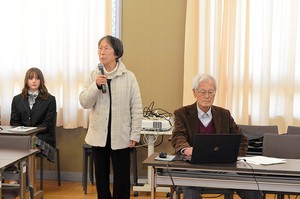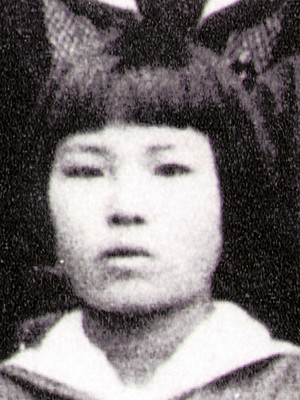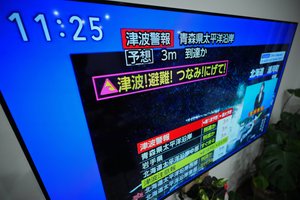By MASAKI KASAI/ Staff Writer
June 20, 2023 at 06:30 JST
Love it or hate it, the new pitch clock introduced by Major League Baseball this season is noticeably shortening game times, as intended.
From the players’ standpoint, former MLB pitcher Shigetoshi Hasegawa said the pitch clock is bringing positive effects as it helps them clear their minds of unnecessary thoughts and focus on their performances.
Under the new rule, pitchers must start their pitching motions within 15 to 20 seconds of receiving the ball from the catcher, or a ball will be added to the count.
Meanwhile, batters must be ready to hit before the remaining time reaches eight seconds, or a strike will be added to the count.
According to the baseball statistics website Baseball-Reference, the average nine-inning MLB game this season is two hours and 36 minutes long (as of April 30), significantly shortened from last year’s three hours and three minutes.
In an interview with The Asahi Shimbun, Hasegawa said the pitch clock has been a “big hit” with the players.
After starting his professional career with the Orix BlueWave (current Orix Buffaloes), Hasegawa went on to play with the Los Angeles Angels and the Seattle Mariners in MLB.
He now works as a baseball commentator.
Excerpts of the interview follow:
***
Question: How do you think the pitch clock is impacting baseball?
Hasegawa: First of all, this is a rule introduced to reduce the length of games for fans, but I think that it has had a good effect in improving the performances of players as well. It has been one of the biggest hits in a long while among efforts that MLB has made.

Q: What do you mean by “improving the performances?”
A: Pitchers must throw a pitch within a predetermined number of seconds and some of them have been bothered by the new rule.
However, speaking from the standpoint of player mentality, I’m sure it has been improving their performances because players tend not to think about superfluous and unnecessary things when the game is fast-paced.
It may be difficult to see with the eye, but I think we can expect to see more high-level games than before.
For instance, pedaling a bicycle and walking up the stairs require body movements that are technically difficult, but we can perform them easily.
Similarly, it would be better for pitchers when they take the mound and for hitters when they step into the batter’s box to keep their minds in a state of “nothingness” and not think about anything as much as possible.
I think there are more players who are in a state of nothingness than before because there is actually less time for them to throw pitches or hit them.
Q: Are you saying they can repeat the same results more frequently when they think less about unnecessary things?
A: Without a doubt, the shorter the time until the player goes into motion--that is to say, the lesser the time to think--the better.
When players have less time, they can let their latent skills do the job, so to speak, or at least move closer toward that direction.
Q: It’s surprising that the pitch clock has already reduced the average game time by nearly 30 minutes.
A: When I played with Orix, my time between pitches was relatively long and teammates Ichiro Suzuki and So Taguchi often told me, “I don’t like the games you pitch,” jokingly.
But when I moved to MLB, I thought it should be really faster, because I felt the time sitting in the bullpen was too long.
Our patience is not unlimited, so it is quite difficult to continue playing for three or even four hours while maintaining a sense of tension.
Meanwhile, when the game is finishing in about two and a half hours thanks to the pitch clock, it makes a difference for players to keep themselves focused. It is beneficial to players who were playing games that were a bit too long in the past.
Q: It has been said that Japanese fans enjoy the time between plays, thinking about strategy.
A: Of course, there is a similar culture in the United States. Enjoying the in-between time means that we are free to think when there is time between plays during a game.
U.S. baseball fans love stats, but they usually check data and think about the game after it is over, and I don’t think many fans do so at the ballpark.
Q: When professional sports leagues are fighting for fans, what can MLB do to survive?
A: NFL, NBA and NHL games, which are popular in the United States, last about two and a half hours, so, in a sense, they are a “sport of time.”
Meanwhile, there is no time limit in baseball. How can we attract fans to watch baseball games at a time when everyone wants to spend their time more efficiently? The new rules reflect how MLB aims to achieve that goal.
With smartphones and other devices becoming commonplace, not only live sports webcasts but also other video streaming services offering movies, dramas and other content are also thriving.
However, one of the characteristics of sport is that it can really be enjoyed when it is watched live, when it is performed in front of spectators.
How can we keep live fans entertained for two and a half hours? I think that will continue to be the key factor.




















A peek through the music industry’s curtain at the producers who harnessed social media to help their idols go global.
A series based on diplomatic documents declassified by Japan’s Foreign Ministry
Here is a collection of first-hand accounts by “hibakusha” atomic bomb survivors.
Cooking experts, chefs and others involved in the field of food introduce their special recipes intertwined with their paths in life.
A series about Japanese-Americans and their memories of World War II